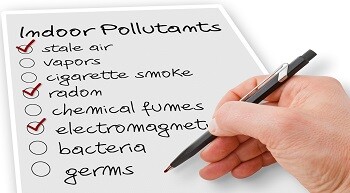The quality of rental accommodation is critical to the success and sustainability of the residential rental sector and rented properties should provide efficient, safe and healthy environments for those who live in them.
Updating and improving standards and regulating their application to the sector are essential to ensuring the quality of accommodation. The Housing Acts 1966 to 2014 allocate responsibility to the Local Authorities for the enforcement of the Housing (Standards for Rented Houses) Regulations that prescribe the minimum standards for rented accommodation.
Regulations setting out minimum standards for rented accommodation were first set out in 1993 with the most recent iteration being the Housing (Standards for Rented Houses) 2019. Regulation 8 of these standards requires that all rented homes have adequate ventilation. Analysis of a recent inspection sample shows that 52% of the older rented housing stock and 32% of recently built rented housing stock are non-compliant in the provision of adequate ventilation.
In ‘normal’ times, we spend around 90% of our time indoors and around 16 hours a day on average at home. Time spent in our homes has been estimated by some experts to have increased to 98% and 23.5 hours respectively during the Covid-19 pandemic.
With people spending so much of their time indoors, and with growing evidence of poor indoor air quality (IAQ) being linked to a range of health conditions, there has never been a more important time to ensure a building has effective ventilation. In addition, people who may be exposed to indoor air pollutants for the longest periods of time are often those most susceptible including the young, the elderly and those suffering from respiratory or cardiovascular disease.
Ventilation is the intentional introduction of fresh outside air and the removal of stale indoor air from the living spaces within our homes. Without proper ventilation, an otherwise insulated and airtight house will seal in harmful pollutants, such as carbon monoxide as well as moisture that can damage a property’s structure.
Carbon monoxide is the odourless deadly gas produced as a by-product of the combustion of natural gas and home heating fuels such as propane, oil, coal, and timber. Inhabitants of a home generate moisture when they cook, shower, and do laundry. Just by breathing and perspiring, a typical family adds about three gallons of water per day to their indoor air.
Effective ventilation facilitates the exchange of air between the outdoors and indoors and helps to prevent the build-up of airborne pollutants as well as reducing the threat of viruses taking hold inside buildings.
Outdoor air enters and leaves a building by infiltration, natural ventilation, and mechanical ventilation.
Air movement associated with infiltration and natural ventilation occurs as the air moves through opened windows, doors, and vents. A secure ventilation opening located in a wall or window (trickle ventilation) ordinarily incorporates a controllable ventilation grille which can be fully opened or closed.
There are a number of mechanical ventilation devices, from outdoor-vented fans that intermittently remove air from a single room, such as bathrooms and kitchen, to air handling systems that use fans and duct work to continuously remove indoor air and distribute filtered and conditioned outdoor air to strategic points throughout a house.
Good indoor air quality is important to avoid health issues and ventilation is now generally accepted as an important factor in preventing the virus that causes Covid-19 from spreading.
Aside from the good sense of it, to achieve compliance with Regulation 8 Housing (Standards for Rented Houses) Regulations 2019, the means of ventilation chosen for each room within a rented property should ensure an adequate supply of fresh air for the people living within the property, dispersal of residual pollutants and removal of water vapour from the areas where it is produced in significant quantities. This should reduce the likelihood of creating conditions that support the growth of mould, provide good indoor air quality while protecting investment in rented housing stock.

